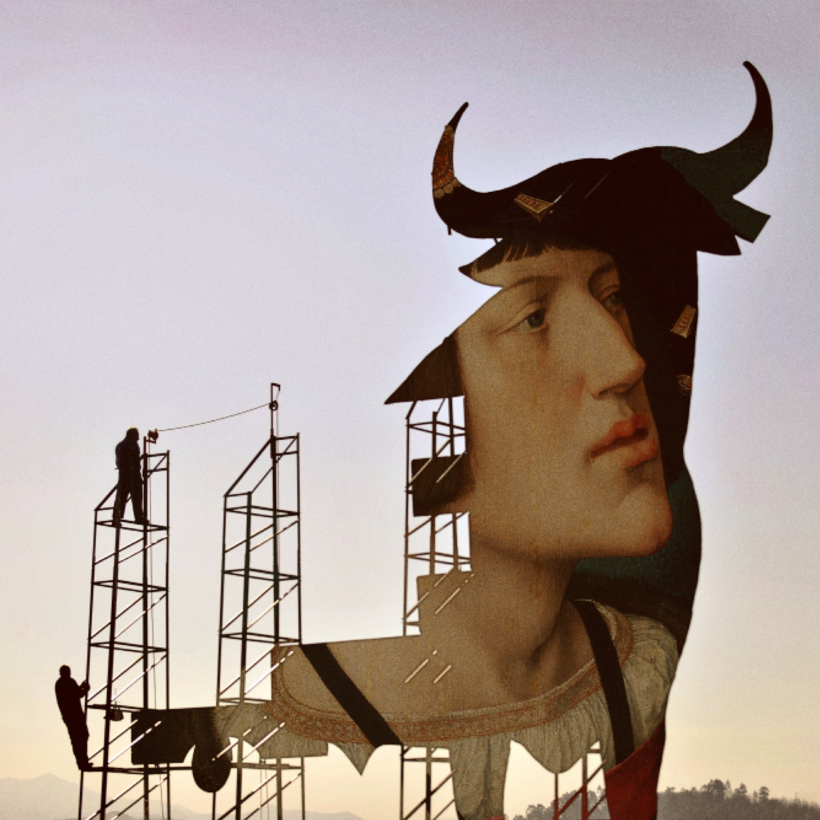What is Spain? The question has always troubled Spaniards. Is it best understood as the land of Velázquez, Cervantes and Almodóvar, epitomized by the exuberant noise of Barça fans, the aching beauty of the Alhambra and by King Juan Carlos delivering democracy? Or is Spain defined by its darkness: the Inquisition, the slave trade, the cruelty of Cortés, Francoist fascism and King Juan Carlos taking bribes? Throughout their history, Giles Tremlett writes, the Spanish people have “struggled … to fuse together a fractured soul”.
When the Spanish national anthem is played at the World Cup, players simply hum; they do not sing. That’s because the song has no words. According to Tremlett, “Spaniards disagree so profoundly about their own history that they dare not put words to it.” The ability to ignore the past remains an important component in social harmony. Forgetting — olvidando — has occasionally been an official policy. Eyes are intentionally averted from bodies secretly buried.
Tremlett, formerly the Madrid correspondent for The Economist, has lived in Spain almost continuously for 35 years. This book is his attempt to distill centuries of Spanish history — from Roman times to the present — into something informative and accessible, but still profound. He loves Spain, but is not blind to its many faults. He’s especially interested in that “lack of a homogenous identity [that] is Spain’s defining trait”.
Confusion over identity arises in part because of the Moorish period. In the early 8th century invaders from north Africa conquered Spain and it became an extension of the Umayyad dynasty. According to some estimates, the Iberian peninsula was 80 per cent Muslim by the year 1100. Moorish Spain enjoyed “a period of cultural glory which contrasted with Western Europe’s status as an ignorant backwater”. Cordoba, Tremlett writes, “was a great and sophisticated Arab city that had been transplanted onto European soil”. The grandeur was abundantly evident, but was it really Spanish?
An attempt to drive out the Moors — the Reconquista — began shortly after they arrived and took 781 years to complete. The Spanish made a hero of Santiago the Moorslayer, a soldier admired for his brutal determination to reassert Spanish identity. The process was completed in 1492, when Boabdil, the last Muslim king of Granada, was driven from the Alhambra.
“Spaniards disagree so profoundly about their own history that they dare not put words to it.”
Although the rulers changed, the grandeur remained. The marriage of Ferdinand and Isabella in 1469 united Aragon and Castile, giving rise to a country geographically resembling modern Spain. The Spanish then extended their power across the oceans, creating a global empire that, according to Tremlett, “helped unite Spain, not least because so many Spaniards could share in the project of despoiling it”. That said, gold and silver from America never trickled down to the very poor, whose misery worsened as Spain’s prestige grew.
Spain’s golden age coincided with an attempt at spiritual purification, in the form of the Inquisition, which began in 1478. Religious faith, crudely assessed, became a measure of Spanish identity. Those who failed the test were often executed. The dead were sometimes dug up and burnt at the stake, or descendants were fined for the transgressions of relatives long deceased. The opportunities for exploitation were immense, which might explain why the Inquisition continued for 400 years, until 1834.
When Ferdinand died in 1516, his crown went to Charles I, who was also (just to confuse things) Charles V, Holy Roman Emperor. In addition to Spain his dominions included the Low Countries, southern Italy and a good chunk of central Europe, not to mention those colonies abroad. Spaniards today call him Carlos Primero, fittingly also the name of a rather splendid brandy. He embodies Spain’s golden age, even though he could not speak Spanish when he assumed the throne.
Charles had a jutting jaw — a family trait. The Habsburg jaw, a genetic disorder compounded by inbreeding, relates inversely to the quality of governance. “The kings’ chins grew longer,” Tremlett writes, “and their brains (or interest in governing) grew feebler.” Charles II, the last Habsburg king of Spain, had a jaw that looked like a misplaced trowel. He inherited the throne at age four, suffered from epilepsy and rickets, and failed to produce an heir.
The Habsburg jaw, a genetic disorder compounded by inbreeding, relates inversely to the quality of governance.
The period from the end of Habsburg rule in 1700 until the death of the fascist dictator Francisco Franco in 1975 was one of persistent decline. Long periods of absolutism were interrupted by short and unsuccessful experiments with liberal democracy. Civil wars were common, as were coups and assassinations. There were 50 coups between 1814 and 1981. Franco’s repressive regime (1936-75) brought a semblance of stability but, with creativity and dynamism stifled, Spain stood still in comparison with her liberal European counterparts. She never realized her potential.
For many Spaniards, absolute power seemed the best response to instability. Throughout their history, Spaniards have been rather too fond of dictators. In the 1820s a battle cry went: “Muera la libertad y vivan las cadenas!” — “Death to freedom and long live our chains!” Even today there’s an unhealthy nostalgia for Franco.
Tremlett negotiates Spain’s chaotic history with admirable clarity and style. His love of his adopted country is readily apparent; a light is shone on Spain’s perfidy, but also its vibrant culture. The abundant photographs in this beautiful book are as bright as the Spanish sun. Appropriate emphasis is given to the strength of Spanish women, who have provided a backbone of stability through centuries of anarchy. After the Franco years of misogynistic repression, Spanish women have assumed their rightful place in business, medicine, academia and government.
Nowadays Spain seems uncharacteristically stable, despite the disruptions caused by economic recession, pandemic and Catalan separatism. Yet is it a nation? There’s still that nostalgia for absolutism, that predilection for corruption and that tendency to dwell on differences. “May God protect you,” the poet Antonio Machado wrote in 1912. “One of the two Spains will freeze your heart.” A century later those words still ring true.
Yet is any nation ever really homogeneous? Tremlett describes a country troubled by its imperial past, a nation both inclusive and bigoted. A dysfunctional royal family and corrupt politicians regularly dominate the news. Sound familiar? What makes Spain different from Britain is the deep anxiety these issues cause. The Spanish wear their hearts on their sleeves. The British, perhaps, are just better at covering up the past, at synthesizing national pride. It’s ironic that the Spaniards, so determined to forget, remain so proficient at remembering.

Gerard DeGroot is a professor of modern history at the University of St. Andrews and the author of several books, including The Bomb: A Life and The Seventies Unplugged


